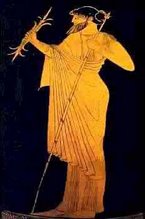
I am sharing my basic coin photography setup for good and quick coin photos. I realize you will not have the same photography items as I have but I think the photograph and article will steer you in the proper direction.
First of all, I will share a few things that are a given for obtaining highly decent coin photographs. Look at the photograph you see above and you will see more than the two lights I use in my basic setup. Focus on the two lights on either side of the inverted "tea container." You will see two flex-arm lights. These are the two lights I use in this exercise. I use fluorescent bulbs in the 5000 to 6500 Kelvin range.
I find that my cameras will easily adjust to these K numbers. Many of the fluorescent bulbs are around 2500 K and you want to avoid these bulbs when using for coin photography. Home Depot used to have a 5500 K bulb and that is one of the numbers I like. I assume they still carry the 5500. WalMart also has a good selection of fluorescent bulbs.
Don't depend on the "daylight" fluorescent to be a good bulb for coin photography. Daylights are often too far towards the yellow side of the spectrum and yellow is very difficult to work around when trying to balance your lighting. You should find the Kelvin designation on either the bulb or the container. If I don't find a K designation I then assume the bulb is in the 2500 K range and I don't buy.
When I buy bulbs I make sure I write the K number on the bulb base before tossing the cardboard container. I use 10 to 15 watt bulbs. However, I see no reason not to use the 25-watt bulbs. Next I need to explain the plastic container before moving on.
I discovered the effective application of the tea container a couple years ago and I use the term tea container very loosely. The container is a two-quart translucent or frosted container. The container admits light but filters as it does thus dispersing and softening the light as the light bounces around the inside of the container.
Back to the flex-arm lights. One could use very inexpensive goose neck lamps just as well as the lights you see I am using. Our objective is to enable us to place the lights where we need them so use whatever works for you. My setup looks a bit cluttered but that is the way I work. Fortunately you cannot see the remainder of my art/coin studio!
The frosted container (Sterilite brand) can be found at WalMart for less than three dollars. I often see the containers at Dollar Stores for about the same price. The containner is a two quart container size. The following is very important so please follow my directions. You will need to cut the entire bottom out of the container. As I recall I used an Xacto knife and Xacto knives can very dangerous!
If there is any question as to your ability, please ask a skilled person to cut the bottom for you. There is more than one way to cut the bottom from the container. In the photograph above you will see I have my lens centered over the upside down container. Remember I have cut the bottom out of the container. When using my setup I place my coin on a 1" length dowel about 3/8" in diameter. I keep plenty of dowels of various lengths and diameters handy and use the proper height and diameter as the coins demand.
I have no idea what kind of camera you use but I see no reason why one cannot use any digital with a macro setting. A shutter release timer is great to use. The delay timer eliminates the need to grasp the camera which could result in "camera shake." You also need to be able to adjust your white balance. Often the normal daylight setting is fine when using the Kelvin I have suggested.
If you do use the setup I am suggesting, please spend lots of time moving the lights around until you find what works for you. This setup is very forgiving and works wonderfully well once you learn how to properly disperse your lighting. Move the lights up and down and in and out as you practice. Remember, the lights do not need be at the same level. For example one light may be higher on one side than the other in order to adjust your lighting. We now need to practice, practice and practice some more. The more coins you photograph and the more you experiment with your lighting the better coin photographer you will be.
I have shared what I consider to be the most expeditious method for getting good photo images. This is for Newbies but not Newbies only. I have gotten good and positive feedback from others who have been photographing coins for years. Is it a professional setup? No. Is the setup for those who want to share their coin images in a clear and effective way? Yes. I get really good results when using this method and I assume you can do the same.
I may have left something out you need to know. If so, please write to me and I will be happy to answer. God Bless.. Jerry..

